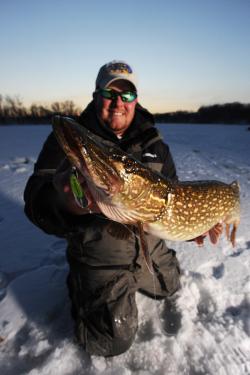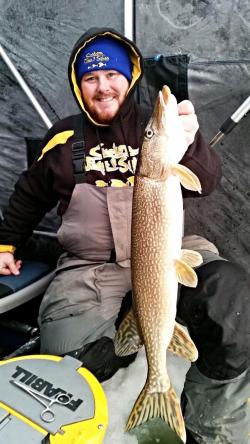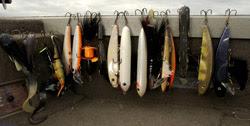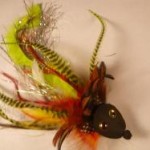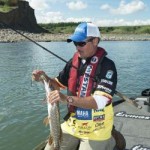Spoonin’ Mid-Winter Pike
from The Fishing Wire and Traditions Media
From the large natural lakes of his west central Minnesota stomping grounds to North Dakota’s Lake Sakakawea to prairie potholes, Macheledt’s system for catching pike is a one-two punch of tip-up fishing followed by aggressive rod-in-hand combat with the unfairly maligned northern pike.
But he’s not after two- or three-pound “hammer handles, “slough snakes,” or “snot rockets.” The fish that get Macheledt’s blood pumping can peel 40 yards faster than wide receiver Calvin Johnson.
But first, Macheledt’s gotta find ’em.
“In Minnesota, I always start by scouting with an Aqua-Vu Micro underwater camera, looking for weed edges with big pike food. That tells me where I should place my tip-ups. Once a flag goes off, I start jigging in the same area. Pike like to slash and dash. If there’s food, there will be more on patrol.”
(video)
“In lakes without good weeds, like some of the small Dakotas waters, I concentrate on main basin areas loaded with perch and just put in my time. Pike will eventually cruise through looking for lunch. You’ll know when the perch scoot from your flasher and a big red mark appears.”
To match the perch profile, Macheledt turns to ¼-ounce Custom Jigs & Spins Pro Series Slender Spoons tipped with a soft plastic.
“I stumbled into the big plastics out of necessity. I had run out of minnows but found a pack of 3-inch B Fish N Tackle Moxis in my box. Tipped on the spoon, the tail activates nicely when you rip and let if fall.”
Macheledt keeps color simple. “For spoons, I like gold in dirty water, nickel when the visibility is better. Perch patterns top the list. And for the plastic, again, typically something with green, yellow, orange, because of the perch connection.”
Although he still carries minnows for rigging his search tip-ups, Macheledt is converting to a nearly all-plastics game. “You can really rip the spoon without losing your bait. Your presentation always looks the same and you keep your line in the water – instead of re-baiting all the time – which just leads to more hookups.”
Macheledt advises a stout stick, heavy fluoro leader (20 lb. and up), and a spinning reel with powerful, buttery drag that doesn’t freeze up in cold temps, like Frabill’s heavy power 38-inch Gussy Series Ice Hunter Combo. “You’ve gotta have enough backbone to penetrate a pike’s bony mouth. No fairy wands.” The 36-inch medium heavy St. Croix AVID Ice Jigging Rod is another top contender.
To hedge bets with big pike, Macheledt recommends Custom Jigs’ Pro Finesse Drop Chain. “Where legal, attach a #10 Pro Finesse Drop Chain without taking off the existing Pro Series Slender Spoon treble. Just clip it on the split ring of the included Slender Spoon hook … and you’ve got a super-effective stinger hook when using meat or plastic! Especially for the larger pike chomping on big perch, beefing up the profile can be key.”